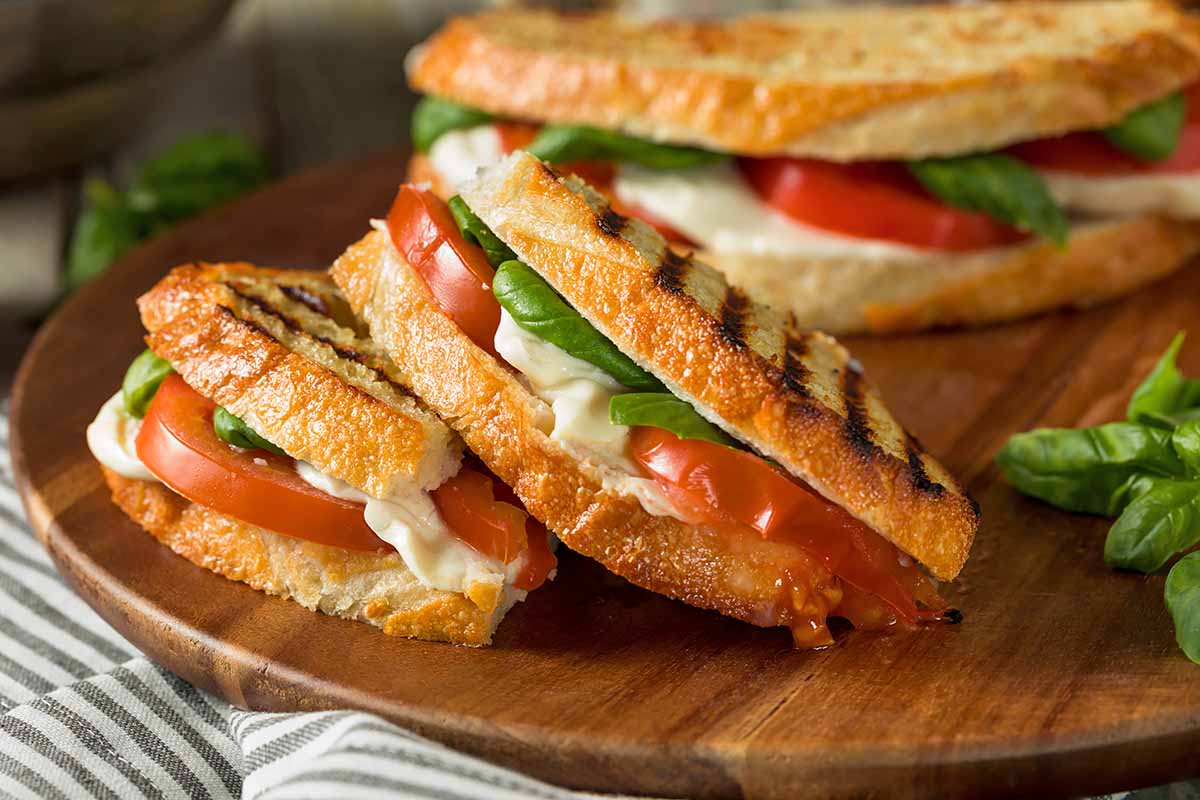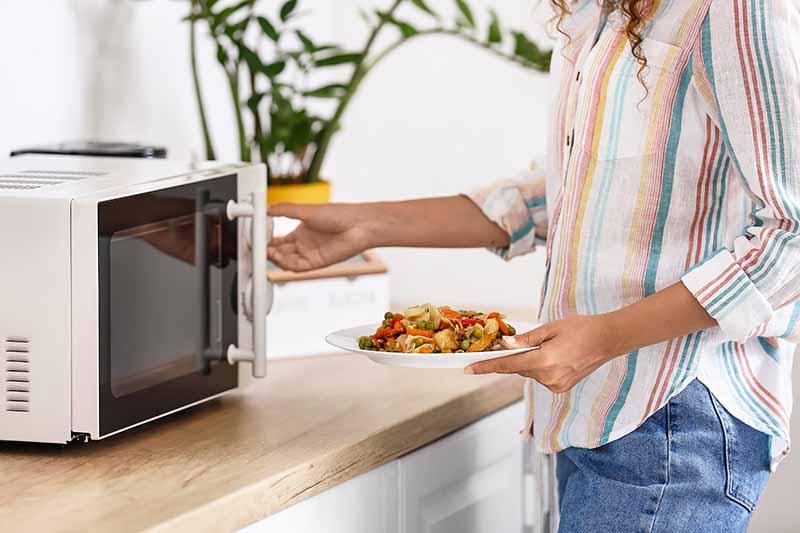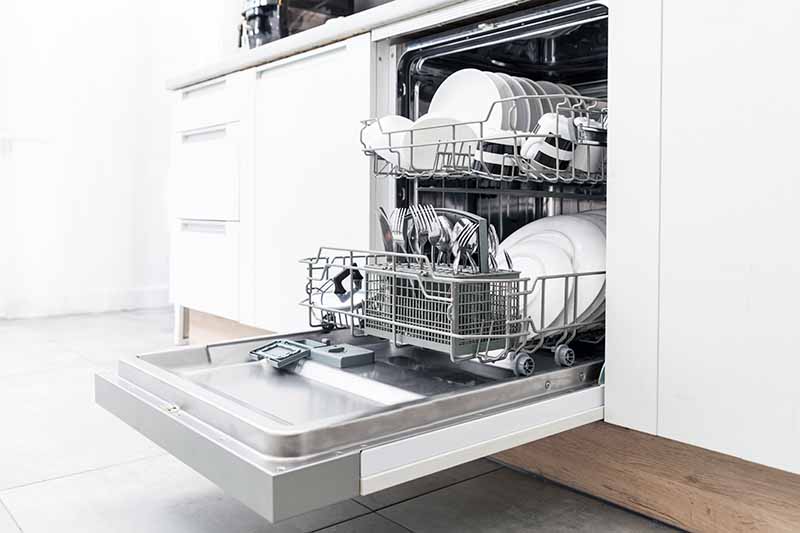If you are shopping for a new stove and have the option of gas or electric, you’ve come to the right place.
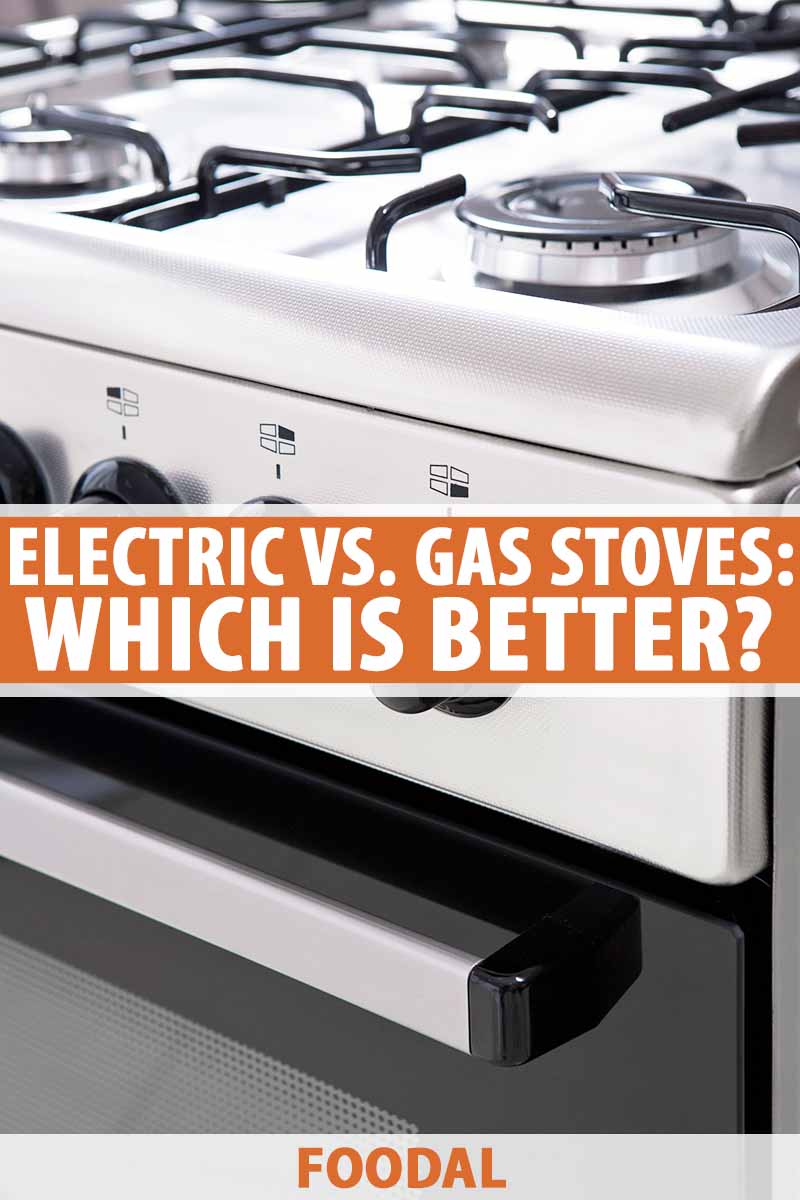
Note that if your home is not currently tied into a public natural gas (NG) line, and you don’t have a propane (LPG) tank supplying your home, a utility company will have to run a line to your property before you can install a gas stove. You need to tell the appliance salesperson whether you have NG or LPG to purchase the proper hook up. In addition, a gas model has an electric ignition, and LED lighted features that require a 120-volt outlet.
If you are equipped with NG or LPG and decide to convert to electric, you need to contact a qualified plumber to cap the gas line and an electrician to install a 220-volt outlet.
This article discusses the pros and cons of both types of stove options to help you make an informed choice.
Here’s what we’ll cover:
How They Work
Let’s get started.
How They Work
The burners on the top of a contemporary gas stove have fuel jets and electric ignition switches. When you turn their knobs to the left to light them, there is a clicking sound as a spark ignites the fuel, creating a blue flame. You then turn the knobs to the right to the desired high, medium, or low setting.
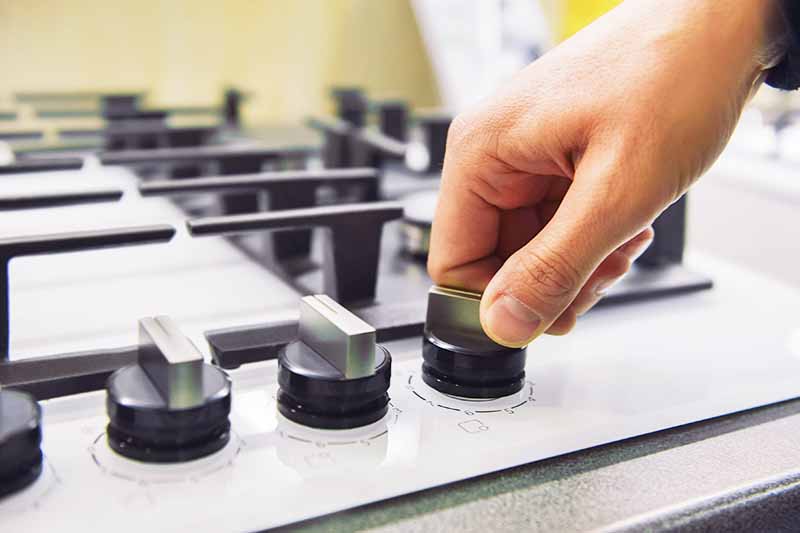
Older models had a pilot light that stayed on all the time. If it went out, it was relit with a match. It is possible to light modern burners with a match manually, but not ovens.
There is grating over the jets on which to place pots. The grates may be individual or conjoined.
The oven starts with the push of a button that ignites the fuel, creating flames beneath the bottom that heat the interior. A thermostat controls the temperature. It fluctuates and achieves an average equal to the desired temperature set.
Beneath the oven is a broiler drawer. It has its own push-button setting and is heated from above by the flames beneath the appliance.
Gas ranges emit an NG or LPG odor, especially when they’re first turned on. The slower you turn the dial from start to the desired setting, the longer the starter clicks, the more unburnt fuel the jet emits, and the more it smells.
An electric stove has burners made of metal coils that may be visible or hidden. When you turn the knobs to the right, or push the appropriate touchpad buttons, power flows through the coils, and they glow orange or red.
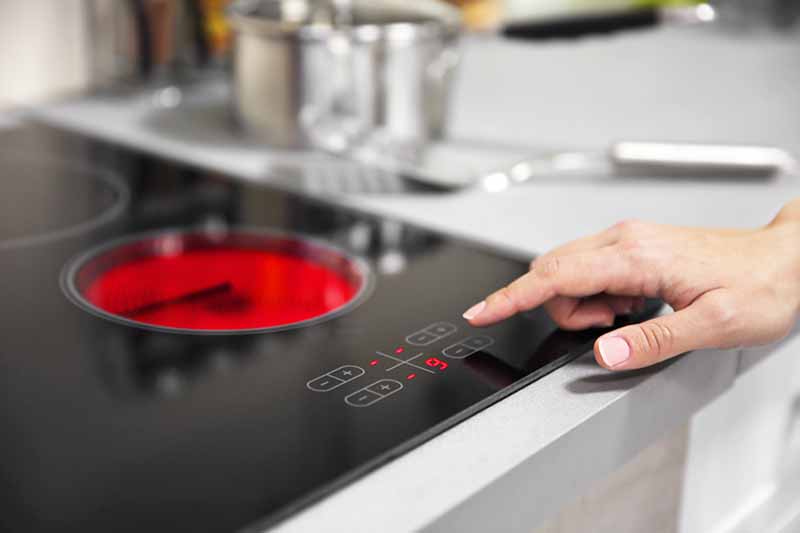
Some burners are individual and may be round, removable coils with drip pans or flat, non-removable black solid disks. Others, called radiant, are positioned beneath a one-piece flat ceramic cooktop and are indicated by individual circles inscribed on the surface. Pans are placed directly on the burners.
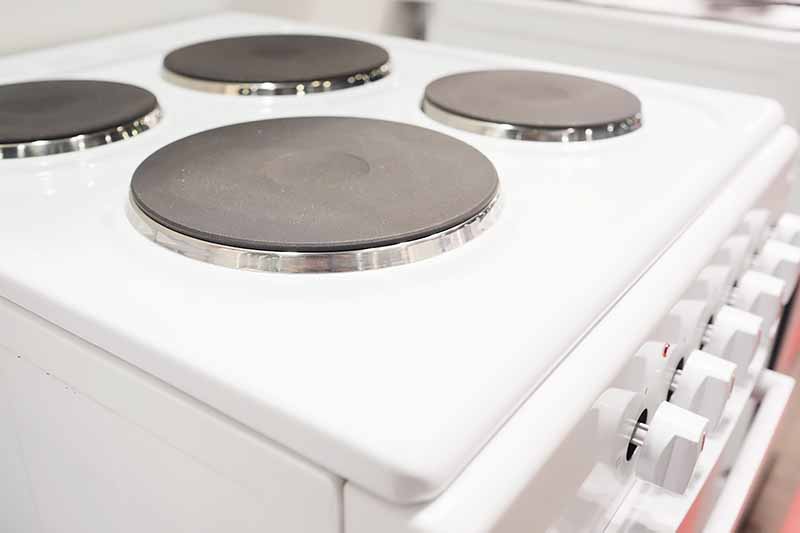
The oven has a rectangular metal coil or element located in the bottom that follows the contours of the bottom of the appliance. Once turned on, a thermostat maintains the average desired temperature. It also has an element on the top for broiling with the door ajar.
Let’s look at some of the different styles available.
A Range of Ranges
Stoves may be free-standing, with all sides finished attractively, or “slide-in,” with unfinished sides for a snug, custom fit between cabinets.
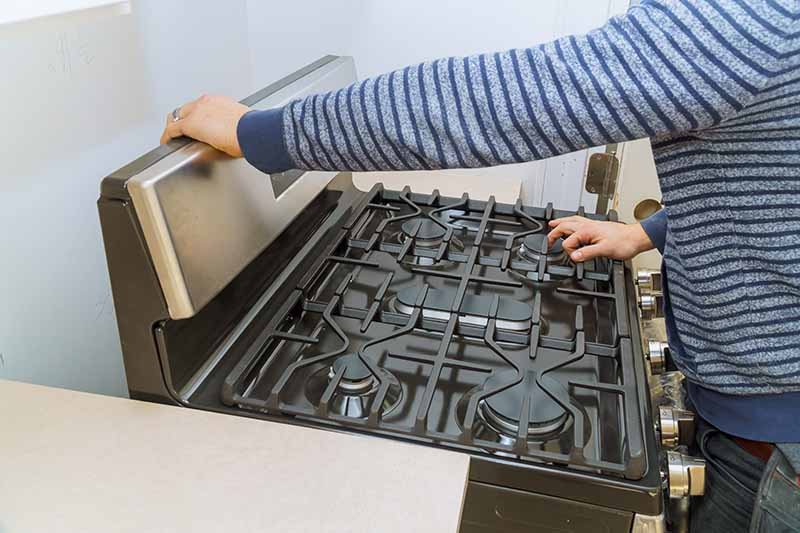
In addition to these traditional options, there are specialty items, including:
- Convection Ovens
- Cooktops
- Hybrids
- Wall Ovens
Let’s take a look at them.
Convection Ovens
A convection model has a fan that helps distribute heat evenly and cook foods faster. It can be gas or electric.
Cooktops
A cooktop, aka hob, consists of a set of burners that fits into a countertop. There may be an oven below or not. It may be gas, electric, induction, or a hybrid (see below).

An induction hob is an electric option with cool-touch electromagnetic coils below a ceramic top and using it requires magnetic cookware. It may or may not have “virtual” flames or red coloration when in use.
Two points to note with induction products are that they may make a humming sound during use, and their electromagnetic fields can interfere with digital cooking thermometers, as well as implanted medical devices, as we’ll go over in more detail in the safety section below.
Hybrids
A hybrid combines two types of fuel, like side-by-side gas and electric burners, that allow grilling or searing over flames while simmering pans over coils, disks, or radiant or induction burners.
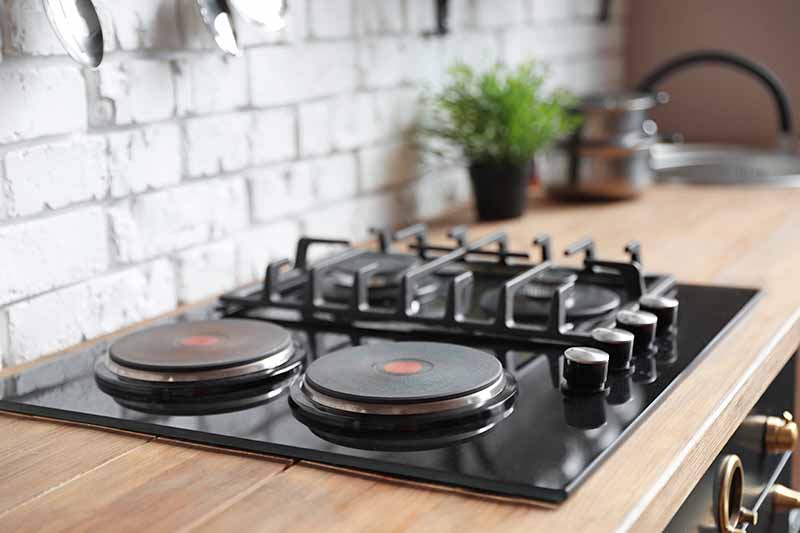
A dual-fuel stove is another hybrid type, with gas burners and an electric oven. Many consider the speed of flame burners and electric baking superior, and this type of model combines the two.
An induction cooktop with a convection oven is another option. It offers cool-touch, even-heating burners and a fan boost for more even baking.
Wall Ovens
Consider a wall option if you prefer a countertop hob and/or want to save floor space. Choose a double model to increase your baking and roasting capacity.
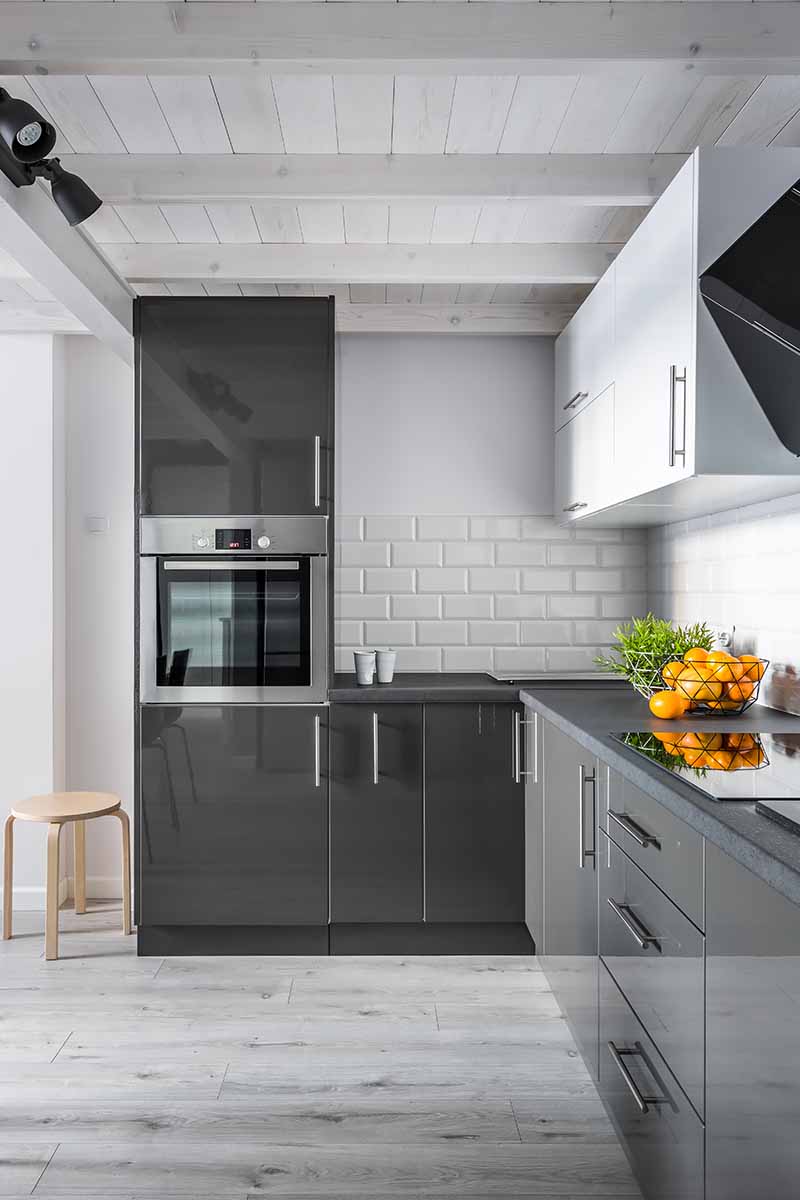
And now, onto the pros and cons!
Weighing the Pros and Cons
Let’s compare critical characteristics.
Burners
Movies portray chefs standing in front of 10-burner commercial gas ranges stirring sauces and grilling entrees to perfection.
Here’s why this is a realistic scene:
Gas burners supply immediate heat, adjust instantly, and have barbecue-like flames for precise and versatile food preparation.
However, they heat unevenly with the flames concentrated around the edges and increase the room temperature around them.
Electric coils take time to heat up, adjust slowly, and produce no flames. They provide even heat once they reach the temperature of the setting chosen.

They, too, heat up the air around them, but to a lesser degree than gas.
Coils with induction technology heat up instantly and adjust instantly. They heat evenly and do not heat the surrounding air. But, they are flameless and not suited to grilling.
Cleaning
The easiest cooktops to clean are electric ceramic top radiant and induction models. However, to avoid scratches and to remove food residue, it’s best to purchase special cleaning products to keep them looking their best.
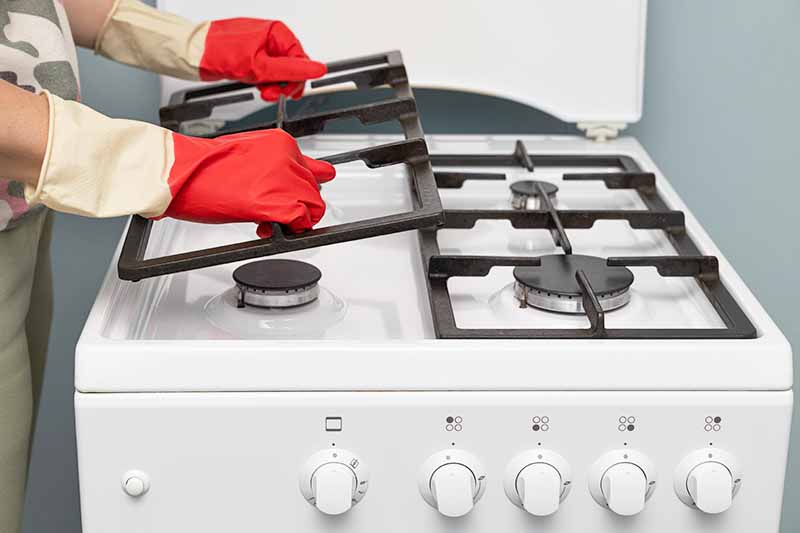
Gas models are the hardest to clean. You must lift the grates to clean spills and use specially-made jet brushes to unclog the tiny holes. Cast iron racks, especially large ones covering two burners at a time, are cumbersome to remove.
Electric coil burners are removable, so you can clean the drip pans beneath them. And for solid disk-type burners, there are special cleaners available.
Another cleaning consideration is whether to choose a self-cleaning or non-self cleaning gas or electric oven, which brings us to our next topic, cost.
Cost
The cost to purchase a gas stove is usually more than that of a comparable electric model. But although utility costs vary, in recent years, the cost to run NG and LPG appliances has been less than it is for similar electric models.
Induction hobs and convection ovens are at the costlier end of the product purchasing spectrum.
And when you add features, like self-cleaning, the bottom line increases.
Consider that you may also have to buy new cookware if you choose a ceramic-top model because rough-bottomed pieces can scratch the surface. And as mentioned, induction burners only work with magnetic pots and pans.
There are also environmental costs to consider.
A 2022 study shows that gas ranges emit nitrogen oxides, NOx, which can trigger respiratory diseases, as well as methane, CH4, that can contribute to global warming.
Electric appliances run on fossil-fuel-generated power.
Induction hobs are the most efficient users of energy because, although they require electricity, they cook faster.
Consider the following:
A 2014 study determined that 40 percent of the energy consumed during the operation of a gas range transfers to the food, 74 percent for a standard electric model, and 90 percent for induction cooking.
Wasted energy translates to greater operating costs.
Ovens
If you like to bake and roast, a reliable oven is essential.
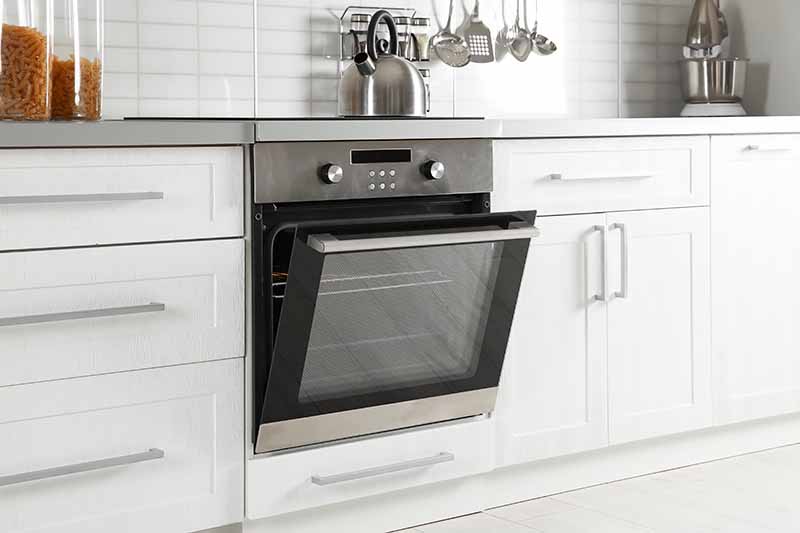
With a gas model, you have a jet in the center of the compartment between the broiler and oven. It provides fast preheating and moisture from the combustion process.
However, the heat circulates unevenly from the center jet, heating the centers of pans more than the edges.
An electric model takes longer to heat up. It has a drier environment and better heat distribution from the rectangular bottom coil, contributing to more even cooking.
Convection models of both types have a fan that circulates heat evenly for the most even cooking.
Safety
Both options of ranges have hot burners that can burn skin if touched.
As mentioned, gas ranges have open flames, emitting chemical compounds that can aggravate respiratory conditions during use. Venting is essential for respiratory health. Vented and unvented charcoal filter range hoods that recirculate can help minimize detrimental effects on indoor air quality.
However, despite having open flames, the National Fire Protection Association reports that more fires occur with electric ranges.
Induction-style cooktops remain cool to the touch, while the pots and pans get hot. They pose the least fire risk.
However, it’s essential to note that 2016 research shows that because of the electromagnetic field (EMF) they generate, they may interfere with the functioning of implanted electronic devices, like unipolar cardiac pacemakers, and use is ill-advised for people who have them.
Recap: It’s Your Call
As you can see, there are many factors to consider when comparing stoves, and there’s no definitive answer to the question of which is better.
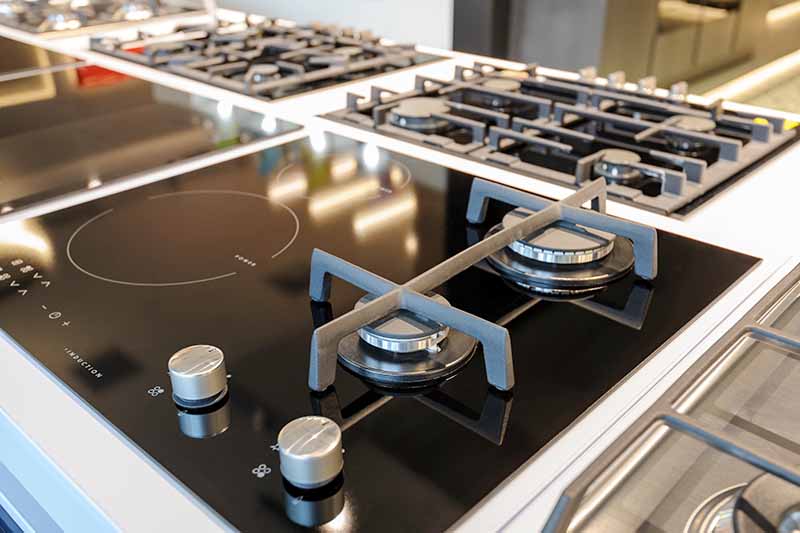
Let’s summarize what we’ve discussed:
Gas Pros:
- Better burner control
- Can manually light burners if electricity is off
- Faster oven preheating
- Fewer fires
- Instant burner heat
- More economical than traditional electric
Gas Cons:
- A hotter kitchen
- Harder to clean
- Higher upfront costs
- Odor during operation
- Potentially harmful emissions from a respiratory and environmental standpoint
- Uneven oven cooking, but better with convection
- Ventilation required
Electric Pros:
- Absence of potentially harmful emissions
- Easier to clean than gas
- More affordable to buy
- More even oven cooking
- Move even oven heating, especially with convection
Electric Cons:
- Ceramic radiant and induction models require specialized cleaning products
- Less burner control
- More expensive to run
- More fires
- Slower burner heating
- Slower oven heating
Induction Pros:
- Cool touch burners
- Even cooking
- Fast cooking
- Instant burner heat
- Lower fire risk
- Most economical because of speed and low energy waste
Induction Cons:
- Cooktop only, must have separate oven
- Expensive to buy
- Potential disruption of implanted electronic devices like unipolar pacemakers
- Requires magnetic pots and pans
A Stove-Savvy Shopper
We hope this guide will help you make an informed decision about the new addition to your kitchen.
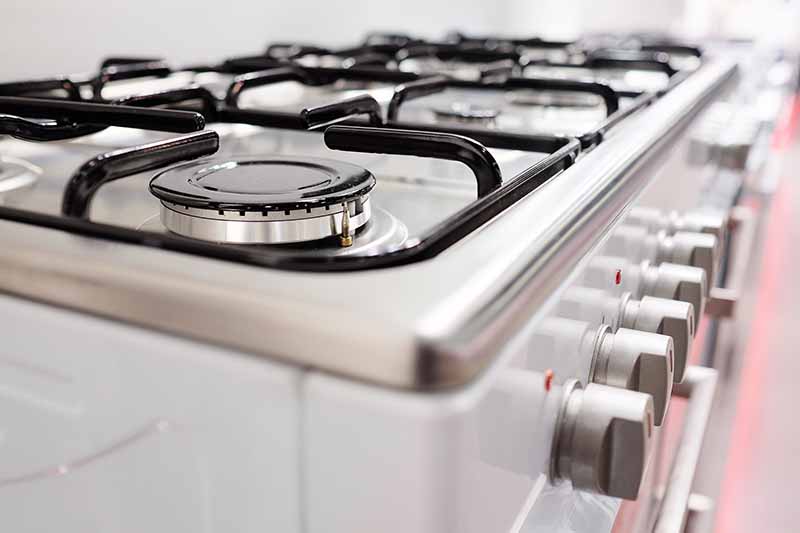
Good luck and happy cooking!
What are the key features you like about the type of stove you own? Please tell us in the comments section below.
If you found this guide valuable and want to read more about kitchen appliances, you’ll also find some useful info here:
- 11 of the Best Toaster Ovens for Your Home Kitchen and Why You Need One
- Choosing the Best Rice Cooker: Perfectly Cooked Grains Every Time!
- Vitamix One Blender for Small Spaces and Minimalists
© Ask the Experts, LLC. ALL RIGHTS RESERVED. See our TOS for more details. Photo Credit: Shutterstock.
About Nan Schiller
Nan Schiller is a writer from southeastern Pennsylvania. When she’s not in the garden, she’s in the kitchen preparing imaginative gluten- and dairy-free meals. With a background in business, writing, editing, and photography, Nan writes humorous and informative articles on gardening, food, parenting, and real estate topics. Having celiac disease has only served to inspire her to continue to explore creative ways to provide her family with nutritious locally-sourced food.


